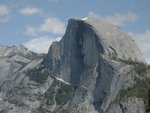Every year, thousands of pairs of feet anxiously scurry across more than 14 miles of Yellowstone National Park’s iconic, wooden boardwalk system, eager to ferry their owners to an up close and personal glimpse of hundreds of natural hydrothermal springs, geysers and waterfalls.
Straight out of an Old West yarn, the snaking stretches of charismatic, weather-beaten planking look more as though they might have been fashioned by Hollywood set designers authentically staging a raucous gunfight scene than by Ph.D. scientists protecting defenseless microorganisms that can’t even be seen with the naked eye.
Rather than to preserve bears, wolves, bison or its myriad of streams, valleys and mountains, Yellowstone was designated as a National Park in 1872 to preserve and protect its more than 10,000 unique thermal features, the largest collection on the planet, spread throughout the park’s 2.2 million acres.
Left to roam on their own, even just one set of those thousands of pairs of feet looking to dip itself into Grand Prismatic Spring might not only encounter scalding water temperatures of more than 200 degrees Fahrenheit, it might also potentially erase hundreds of thousands of years worth of delicate life form history that Yellowstone scientists have yet to fully discover.
As charmingly rustic and meanderingly haphazard as Yellowstone’s boardwalks appear to be, they are, in fact, part of a painstakingly designed foot travel system that allows visitors the most personal access possible to thermal areas while also safeguarding both visitors and natural resources. They draw their worn character from season upon season of heavy travel, extreme weather elements, ever-changing thermal conditions and even the occasional hoof, paw or claw travel as well.
As a result, more than 2,000 feet of Yellowstone’s boardwalks move, change, disappear and reappear just as the thermal areas they surround do, and are built and rebuilt constantly each year. And whether they’re made of wood or experimental recycled composite plastic, as in the case of the Old Faithful boardwalk, their careful placement serves not only as a reminder of the respect due to the forces of Mother Nature, but of the constant flux of Yellowstone’s geologic personality.
“The National Park Service doesn’t just protect the thermal features. If that were the case we’d be out there with epoxy and cement making sure Old Faithful wasn’t going anywhere,” states Yellowstone chief geologist Henry Heasler. “We’re here to protect Yellowstone’s wonderfully dynamic geothermal process. So rather than build a permanent boardwalk around a spring, we’ll continually move the boardwalk to keep everyone safe so the spring can move where it wishes.”
Heasler and others who have worked in the park for many years will say that a common overheard question alarming repeat visitors is, “The geysers and springs look different, smaller than they did when I was here as a kid. What’s wrong? Are they dying out?”
“Absolutely not,” he says. “The idea is not so much that of clinging to your family memory so nostalgically that Old Faithful or Grand Geyser must remain as they appeared to you forever. It’s rather to embrace the concept that they are continually moving, unique forces of nature that -- unlike most other geologic forces that shape the Earth -- we can witness changing with every visit.”
So when a scalding travertine run abounding with millions of microorganisms snakes more closely to a boardwalk than curious fingers or toes should venture, or when a bison decides to take a wooden plank path shortcut to a greener sedge patch, or when walkways simply sag under the weight of the thousands of families looking to make new memories, the behind-the-scenes set designers of Yellowstone’s landscape architecture division step in to reset the stage.
Call it Yellowstone’s version of the walk of fame.
Re: Iconic Yellowstone Boardwalks More Than ‘Old West’ Attraction
All posts are those of the individual authors and the owner
of this site does not endorse them. Content should be considered opinion
and not fact until verified independently.
Sorry, only registered users may post in this forum.


